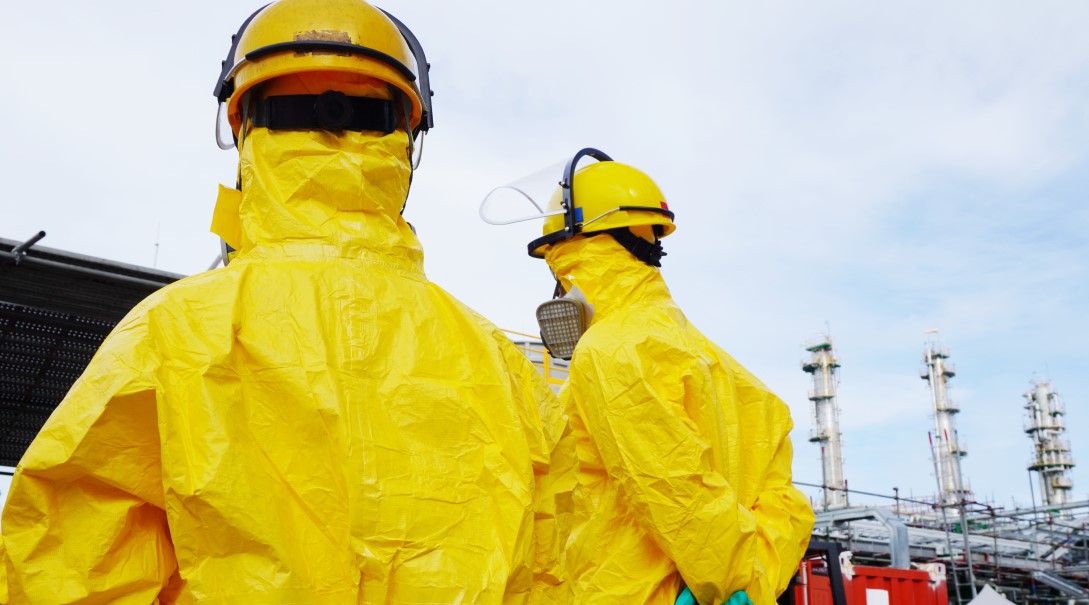OSHA mandates Hazardous Waste Operations and Emergency Response
(HAZWOPER) training to ensure people who work with hazardous materials are prepared to do so safely. But the specific training that a person needs varies based on how exactly they’re going to interact with hazardous materials in the workplace.
That’s why there are five levels of HAZWOPER training instead of just one. So if you need to get your employees trained, you’ll need to be familiar with the level-based HAZWOPER training requirements.
Who Needs Training?
Anybody who works with hazardous materials is entitled to HAZWOPER training before getting started. Employers who don’t provide this training may put themselves at risk of facing hefty fines from OSHA.
When it comes to HAZWOPER awareness level training, there are three major categories of workers defined under 29 CFR 1910.120. Once you know which category an employee belongs to, it becomes easy to figure out the exact type of training you need to provide.
With that in mind, here are three types of employees to know while thinking about HAZWOPER training requirements.
1. Site Workers
A site worker is defined in the legislation as “workers engaged in operations that could expose them to hazardous substances and health hazards,” which is sort of the catch-all category when it comes to HAZWOPER training levels. Most employees who deal with hazardous materials will qualify as site workers.
2. TSD Workers
A TSD worker is basically a special type of site worker. It’s someone who would qualify as a site worker, but they require special training since they work at a treatment, storage, and disposal facility.
3. Emergency Responders
Emergency responders differ from site workers in that they go out to interact with hazardous waste in different settings rather than only at work. Along with the fact that they’re responding to emergency spills influences the type of training that they need.
HAZWOPER Training Levels You Need to Know
Now that we know who needs training, let’s look at the different HAZWOPER training levels. These are split into categories based on the number of training hours that the employee needs to complete.
8-Hour HAZWOPER Training
Most employees who qualify for HAZWOPER training will need more than 8 hours. In fact, there are only two types of workers who can satisfy their HAZWOPER training requirement with an 8-hour course. They are:
- Managers and supervisors who oversee various hazardous waste operations
- Certain types of first responders
That being said, a manager or supervisor needs to complete a 24-hour or 40-hour HAZWOPER training course as a prerequisite to starting this one. So it’s pretty rare for an employee to begin HAZWOPER training with an 8-hour program.
24-Hour HAZWOPER Training
24-hour HAZWOPER training is much more common than 8-hour training. It’s primarily meant for employees that qualify as occasional site workers.
According to the legislation, an occasional site worker is anyone who “works on-site occasionally, for specific limited tasks, who [is] unlikely to be exposed to hazardous substances over PELs.”
The other major category of employee that qualifies for 24-hour training is TSD workers. Some types of first responders may also be eligible for the 24-hour training module.
As was the case with 8-hour training, these employees also need to complete some supervised on-site work in order to complete the course, which is often just one day but could be more in some special circumstances.
40-Hour HAZWOPER Training
40-Hour HAZWOPER training is the primary type of training for workers who deal with hazardous materials. Anybody who qualifies as a standard on-site worker will need to complete a 40-hour training module to meet OSHA’s specifications.
In addition to that 40-hour training course, the worker will also need three days of supervised on-site experience. That way, they get the opportunity to put what they’ve learned into practice while still being able to benefit from close supervision if they need it.
HAZWOPER Refresher Training
Each type of training covered in this article thus far was only the initial training requirements for different types of employees. But OSHA wants to make sure that individuals who work with hazardous materials don’t forget the best practices for doing so.
That’s why everyone who completes an initial HAZWOPER training course also typically must complete annual HAZWOPER refresher training.
Refresher training is almost always an 8-hour course. It allows employees to sharpen their skills and learn any new developments that have come out regarding hazardous material interaction over the previous year.
It’s important for employers to note that your OSHA obligations don’t end with the initial training. Instead, you need to make sure that your employees complete their annual refresher training in order to remain compliant.
Schedule Your Training Today
Whether you run a power plant, oil and gas company, renewable energy business, or any other company that deals with hazardous materials, you need to train your workers.
OSHA dictates the specifics of what training someone who deals with these types of things should do. If you don’t abide by those rules, you could face hefty fines that put the long-term health of your business at risk.
That’s why it’s crucial to be proactive about getting this training completed for your employees. Salvation Safety can help you do that.
We provide a wide variety of HAZWOPER training options. Whether you need to train on-site workers, TSD workers, or emergency workers, we have the expertise to satisfy your obligations under OSHA. All that you need to do is reach out and tell us what you’re looking for, and we’ll handle the rest.
So why wait? Contact Salvation Safety to schedule your HAZWOPER training today.


